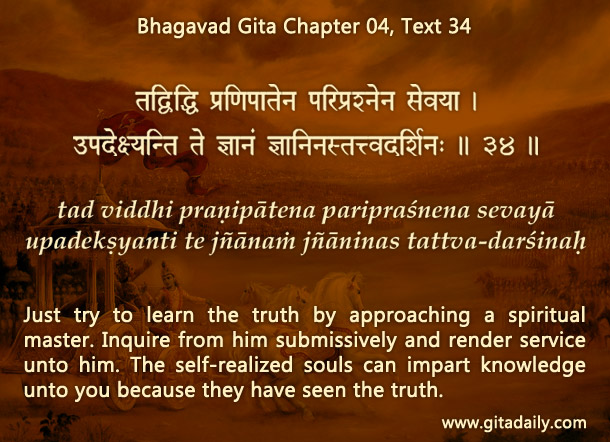In wars, a strategy successful in one war may not be necessarily successful in a later war. For example, World War I saw the use of trench warfare. But by the time of World War II, airplane attacks by bombing from overhead converted trenches into tombs. Though the purpose of fighting the enemy remained the same, World War II necessitated the adoption of a different strategy.
A similar dynamic applies to the efforts for sharing spiritual wisdom, which involves fighting metaphorically against the forces of illusion. In the past, a standard of spiritual erudition was mastery over Sanskrit as it was the language of the intellectual elite. Today, Sanskrit remains for many Hindus the language of official piety, but it is hardly ever the language of daily discourse. No doubt, Sanskrit, being the deva-bhasha (the language of the gods), has its timeless importance, but in and of itself that doesn’t guarantee its timely relevance.
In fact, even in the past, a rigid insistence on Sanskrit by the caste brahmans left the masses defenseless against non-Vedic ideologies such as Buddhism and Jainism which were propagated some two millennia ago in the popular languages such as Pali and Prakrit. During the British colonization of India, the same happened with English-educated intellectuals who were allured by Christianity and Western rationality.
Pertinently, the Bhagavad-gita (04.34) urges us to learn spiritual wisdom by going to living seers. These seers know that faithfulness to the tradition doesn’t necessarily mean using the same strategies as the past seers – it means using the strategies that fulfill that purpose now. Accordingly, spiritual teachers present the timeless principles using timely tools such as the mainstream language, terminology and conceptual framework. By understanding this dynamism inherent within tradition, we can play our part in ensuring that the timelessly important remains contemporarily relevant.


Brilliant analogy – you are doing a great service.